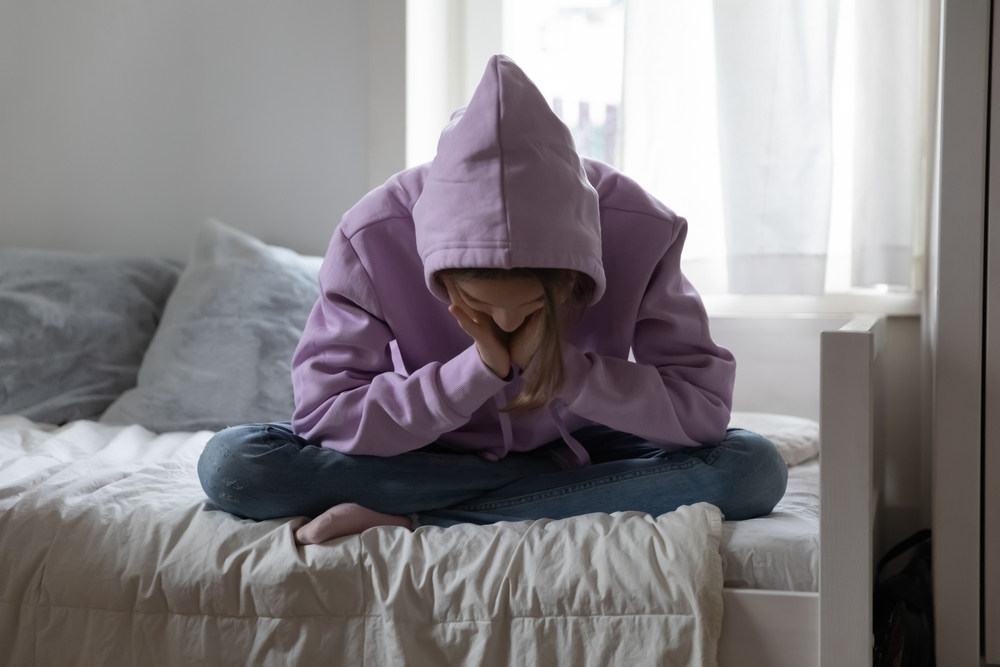Last Updated:
August 14th, 2025
Most of us can paint a mental picture of a person who has drunk too much on a night out. They would probably stumble, slur their speech, or look like they might soon be sick. However, these are relatively benign and temporary signs which fade in a day or two.
Yet other, sometimes permanent signs on a person’s face can indicate they have been suffering from alcoholism for a long time, or that a deeper problem is at play.
We highlight the physical facial indicators that can suggest alcohol use is becoming dangerous. We’ll help you with steps to take to reduce and potentially remove some of the symptoms that appear in the facial area.

When does alcohol use become alcoholism?
Drinking alcohol is a commonplace activity and a way to unwind for so many of us. We might drink a few with a friend for their birthday, or enjoy a little wine as a treat after a long work week. However, when casual drinking turns into a pattern of dependence, it’s clear that a dangerous addiction is starting to lay its roots.
Alcoholism, clinically referred to as alcohol use disorder (AUD), has short and long-term consequences for a person’s health. It’s defined as the inability to stop drinking, despite the harmful consequences, including physical, mental, or social effects.
Warning signs of alcoholism include:
- Needing alcohol to relax or feel “normal”
- Drinking alone or in secret
- Failed attempts to cut down
- Continued use despite health problems or relationship strains
Signs and behaviours, over time, may also start to show physically, especially on a person’s face.
Signs to look for in an alcoholic face
While alcohol has detrimental effects across every part of the human body, long-term alcohol use can cause clear signs on a person’s face. The signs don’t always confirm alcoholism on their own, but if you witness them with compulsive behavioural patterns towards alcohol, they may be signalling a much deeper issue. These include:

Why does alcoholism have these effects?
Alcohol’s impact on the body is wide-reaching and many of its internal effects show up visibly on the face. The most common causes behind these changes include:
- Dehydration: Alcohol is a diuretic, meaning it increases fluid loss. You may have noticed on a night of drinking that you need to urinate much more. This expulsion of liquid leaves you dehydrated with dry, dull and less elastic skin, contributing to a tired, aged appearance over time.
- Inflammation: Drinking alcohol can thin a person’s blood and eventually trigger inflammation, which can cause redness, puffiness and skin sensitivity in and around the face.
- Liver strain: The liver is one of the primary organs responsible for processing alcohol. Long-term overuse can overwhelm it, leading to a build-up of toxins like bilirubin in the bloodstream.
- Nutrient deficiencies: Prolonged alcohol use reduces your body’s ability to absorb important vitamins and minerals like vitamin A, C and zinc. These nutrients are vital for collagen production, healing and maintaining healthy skin.
- Sleep disruption: In both physical and mental ways, alcoholism can plague a person’s ability to get sound, restorative sleep. Poor sleep quality affects circulation and skin repair. Being devoid of enough energy can create a negative spiral as a person chooses alcohol over healthier physical activities.
The signs listed above tend to develop gradually, but they may serve as early visual cues that a person’s body is under duress and alcoholism is spiralling dangerously.
What can I do to help these effects?
It may be the case that you’re looking for these facial signs in a loved one, or you’re checking your own facial appearance and measuring your alcohol use. While some of the listed signs can be solely age-related and permanent, most signs can be reduced or even reversed through positive life changes.
- Reduce or stop alcohol intake: The single most effective step is to cut down or quit drinking completely. Most of the visible skin changes caused by alcoholism begin to improve once alcohol is removed from your system.
- Constant efforts to hydrate: Though it sounds blatant and simple, many of us still don’t drink the recommended 4 to 6 cups of water each day. Make a conscious effort to drink enough water to improve your skin and energy levels.
- Work on a healthier diet: You may be able to work towards healthier diet habits to reverse some of the facial effects. Foods high in antioxidants and fats can support your skin’s repair.
- Develop an exercise routine: If you aren’t doing enough exercise, your body’s ability to circulate blood is likely suffering. Regular exercise boosts circulation and helps develop healthier skin glow.
- Find professional help for liver health: Lastly, it may be the case that alcohol’s effects on the face are an indication that a deep problem is developing. Consider reaching out to professional support. They can help analyse how the person’s liver is doing, or if there is already any damage that needs medical attention. Reaching out before it’s too late may be a life-saving decision.
I need help with my alcohol addiction in my life
If you’ve noticed these facial changes in yourself or someone close to you, it might be time to ask a deeper question: Is alcohol starting to take a toll?
At Recovery Lighthouse UKAT, we support you through every stage of alcohol addiction, from recognising the signs to long-term recovery. Our clinics offer medical detox, tailored therapy and aftercare that helps you reclaim your health, inside and out.
Whether you’re looking for help for yourself or someone you love, we’re here to listen without judgement and guide you toward lasting change.
Reach out today. Recovery can start with a single conversation.
(Click here to see works cited)
- “Alcohol and Sleep: What You Need to Know.” Does Alcohol Impact Your Sleep?, www.ncoa.org/article/how-alcohol-affects-your-sleep
- Care, Leightons Opticians & Hearing. “Puffy Eyes.” Leightons Opticians & Hearing Care, 2 Sept. 2024, www.leightons.co.uk/blog/eye-care/puffy-eyes.
- Polhuis KCMM, Wijnen AHC, Sierksma A, Calame W, Tieland M. The Diuretic Action of Weak and Strong Alcoholic Beverages in Elderly Men: A Randomized Diet-Controlled Crossover Trial. Nutrients. 2017 Jun 28;9(7):660. doi: 10.3390/nu9070660. PMID: 28657601; PMCID: PMC5537780.
- O’Malley SS, Gueorguieva R, Wu R, Jatlow PI. Acute alcohol consumption elevates serum bilirubin: an endogenous antioxidant. Drug Alcohol Depend. 2015 Apr 1;149:87-92. doi: 10.1016/j.drugalcdep.2015.01.023. Epub 2015 Jan 28. PMID: 25707709; PMCID: PMC4540054.
- “How Much Water Should I Drink a Day?” Harvard Health, 22 May 2023, www.health.harvard.edu/staying-healthy/how-much-water-should-you-drink.

